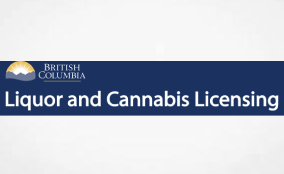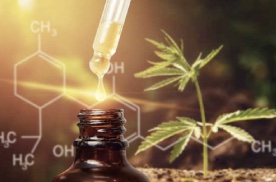Cannabis plants were prominent in the late 17th century when the government promoted hemp cultivation in America in the 17th century to supply rope, sails, and clothes. Hemp was successfully produced domestically up until the end of the Civil War when imports took their place. Cannabis was publicly marketed in pharmacies in the late 19th century and quickly gained popularity as a constituent in numerous medicines.
However, there was a turn-off even when the Marijuana Tax Act, which was passed in 1937, effectively made marijuana illegal. The standing remained even after popular medical research institutes published their research paper stating that marijuana did not cause violence, insanity, addiction, or other drug usages. Years later, in the Farm Bill 2018, changes were brought in to legalize hemp. Nevertheless, the compliance testing of hemp and the cannabis-related product is necessary to establish the reliability and potency of the sample.
What is cannabis?
Cannabis is the collective name for a plant with parts that have psychoactive elements namely Cannabis sativa, Cannabis indica, and Cannabis ruderalis. There are more than 120 cannabinoid components of cannabis plants. Tetrahydrocannabinol or THC is the main psychoactive compound in cannabis. THC is responsible for the “high” that most people associate with cannabis.
In a hemp plant, the THC concentration is less than 0.3% on a dry-weight basis. Any margin above that will be regarded as illegal in some states as the product will be classified as medical cannabis or marijuana. Cannabis also contains CBD as a psychoactive cannabinoid, yet it’s non-intoxicating and non-euphoric. CBD oil is used for alleviating pain specifically for arthritis as it reduces inflammation in the body.
Importance of cannabis testing
If you are a stakeholder, compliance regulations are the first and most crucial thing you need to understand about the cannabis industry. There are various cannabis laws in different states in the US.
Owners of dispensaries need to be aware of the regulations that apply to them and what the authorities can do to non-compliant enterprises. Audits, penalties, and even the termination of the cannabis company license may be among them. In addition, there are other crucial aspects that cannabis businesses should be aware of if they wish to consistently comply with all cannabis laws.
Cannabis cultivators with licenses must adhere to state safety regulations that are always changing. This implies that to sell their products, all growers must meet state regulatory standards. Some marijuana growers have made the mistake of thinking they can perform their testing. Yet, the consequences of failing audits have forced them out of business to a lot of producers.
As a result, cannabis-related product farmers and manufacturers should collaborate with a credible cannabis testing facility.
How and what of cannabis testing?
Cannabis products are tested in labs to ensure that they are safe for use in medical and/or recreational settings. It is mandatory for cannabis testing facilities in the US to hold ISO accreditation; ISO 17025 certification cannot be negotiated. Cannabis testing and calibration findings from accredited laboratories are preferred by regulatory bodies.
For several reasons, it is now increasingly accepted that the industry needs analytical testing of cannabis products for potency and safety. Also, by giving customers knowledge about the products they are buying and assisting in preventing consumption by vulnerable populations, laboratory testing reduces the danger of exposure to pesticides, microorganisms, heavy metals, molds, and residual solvents.
Here are a few factors that cannabis testing in laboratories will display and help growers and business owners stay within the legal boundaries:
- Potency test
Products made from hemp and containing CBD have THC or delta-9 tetrahydrocannabinol levels that are less than 0.3% on a dry weight basis. To comply with the law, a kilo of dried hemp must not contain more than 3 grams of THC. The USDA acknowledges that it is challenging to meet this margin because it is so narrow. Hence, a manufacturer cannot be sued if there is a small discrepancy in THC. But, if a product’s THC content exceeds the threshold limit, the entire shipment must be carefully disposed of.
- Terpenes
Cannabis contains terpene chemicals, which give the plant its unique smells and scents. Some terpenes with distinct citrus scent value hemp goods. Aromatic plants like thyme, basil, and sage contain it. There is a theory that the terpene composition of cannabis plants also affects how effectively hemp products work. For instance, depending on the degree of terpenes, two distinct cannabis products with comparable THC concentrations and strains will have varied benefits as pain oil. The appropriate amount of CBD product utility will be produced by the proper terpene level.
- Residual pesticides and heavy metals
Pesticide use is not allowed for hemp products. However, there can be some during storage of these products and they need to be safely washed away before they product is used for making consumables and wearables. A lab will test the samples for any harmful pesticides and heavy metals that are present in the groundwater and are absorbed through the plant’s root system.
- Microbes
Pathogens like bacteria, fungi, and mold are detected using a polymerase chain reaction, or PCR, test. This test provides an immediate result by identifying the pathogens’ DNA sequence, which is crucial for controlling the rapidly spreading microbial infection.
Conclusion:
The hemp and cannabis industry has a long way to go before it makes a complete comeback as a normal product in our daily lives. For the plant-based products to reclaim similar potential usage in the common parlance, the laboratory testing of cannabis products is both a compliance requirement and a need for gaining traction as a safe and useful plant.
Through testing by an accredited lab, cannabis products from a company win the consumer’s trust for safe standards and consumption. This will help any brand establish its presence in an industry that has tremendous growth potential for both its industrial and retail uses. Hemp products like sustainable fabric also have the potential to reduce the carbon footprint created by fast fashion.

















